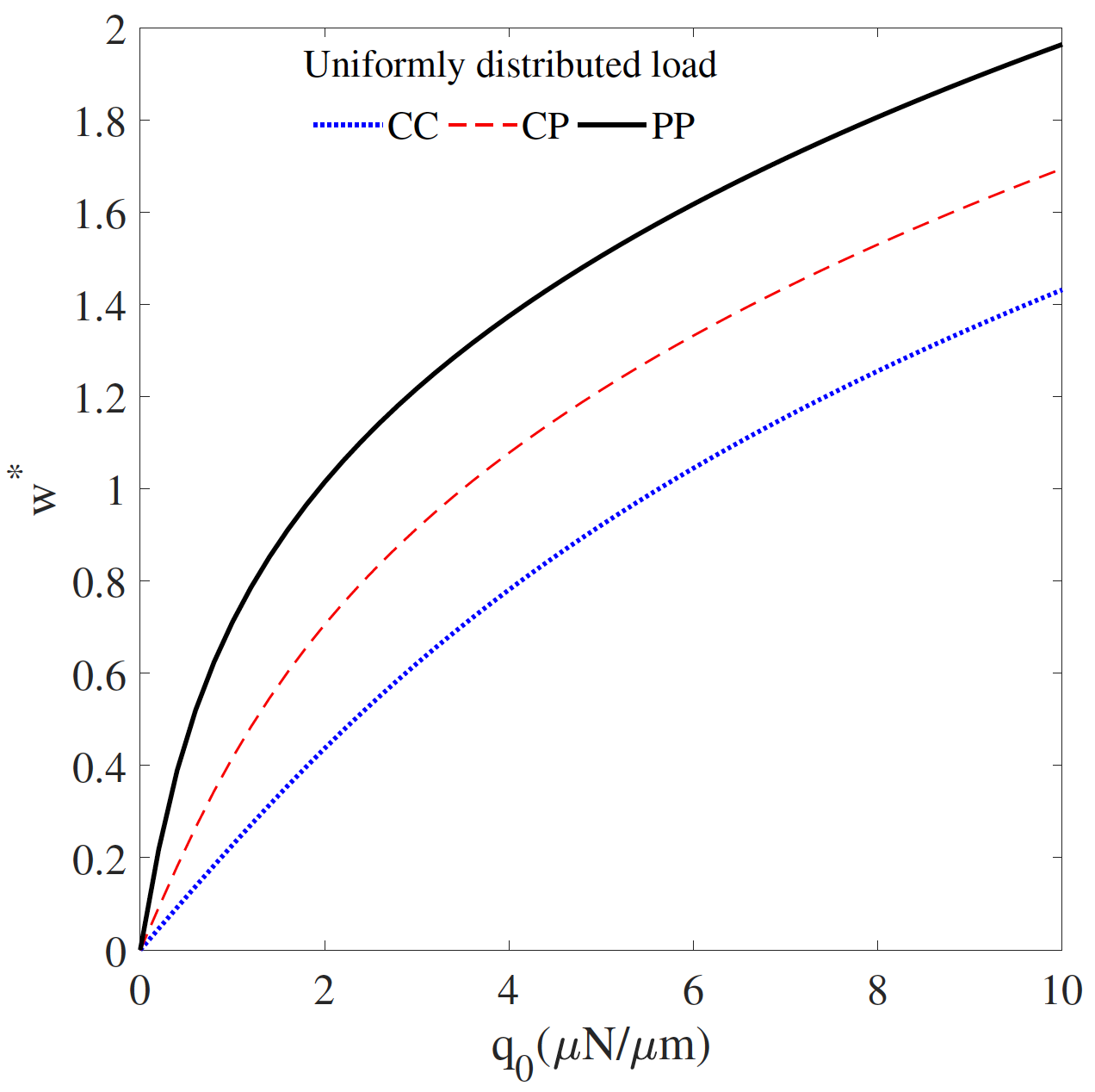Size-dependent nonlinear bending of microbeams based on a third-order shear deformation theory
Author affiliations
DOI:
https://doi.org/10.15625/0866-7136/20702Keywords:
microbeam, micro-size effect, nonlinear bending, finite element formulationAbstract
In this paper, the size-dependent nonlinear bending of microbeams subjected to mechanical loading is studied using a finite element formulation. Based on the von Kármán nonlinear relationship and the third-order shear deformation theory, a size-dependent nonlinear beam element is derived by using the modified couple stress theory (MCST) to capture the microstructural size effect. The element with explicit expressions for the element vector of internal forces and tangent stiffness matrix is derived by employing the transverse shear rotation as a variable. Nonlinear bending of microbeams under different mechanical loading is predicted with the aid of Newton–Raphson iterative method. Numerical investigation shows that the derived element is efficient, and it is capable of giving accurate results by several elements. The obtained results reveal the importance of the micro-size effect on the nonlinear behavior of the microbeams, and the deflections are overestimated when the microstructural effect is ignored. The effects of the material length scale parameter, boundary conditions and loading type on the bending response of the microbeams are studied and highlighted.
Downloads
References
M. I. Younis. MEMS linear and nonlinear statics and dynamics, Vol. 20. Springer Science & Business Media, (2011).
B. Choi and E. G. Lovell. Improved analysis of microbeams under mechanical and electrostatic loads. Journal of Micromechanics and Microengineering, 7, (1), (1997).
E. M. Abdel-Rahman and A. H. Nayfeh. Secondary resonances of electrically actuated resonant microsensors. Journal of Micromechanics and Microengineering, 13, (3), (2003).
S. Chaterjee and G. Pohit. A large deflection model for the pull-in analysis of electrostatically actuated microcantilever beams. Journal of Sound and Vibration, 322, (4-5), (2009), pp. 969–986.
D. C. C. Lam, F. Yang, A. C. M. Chong, J. Wang, and P. Tong. Experiments and theory in strain gradient elasticity. Journal of the Mechanics and Physics of Solids, 51, (8), (2003), pp. 1477–1508.
M. H. Kahrobaiyan, M. Asghari, M. Rahaeifard, and M. T. Ahmadian. A nonlinear strain gradient beam formulation. International Journal of Engineering Science, 49, (11), (2011), pp. 1256–1267.
F. A. C. M. Yang, A. C. M. Chong, D. C. C. Lam, and P. Tong. Couple stress based strain gradient theory for elasticity. International Journal of Solids and Structures, 39, (10), (2002), pp. 2731–2743.
H. Mohammadi and M. Mahzoon. Thermal effects on postbuckling of nonlinear microbeams based on the modified strain gradient theory. Composite Structures, 106, (2013), pp. 764–776.
W. Xia, L. Wang, and L. Yin. Nonlinear non-classical microscale beams: static bending, postbuckling and free vibration. International Journal of Engineering Science, 48, (12), (2010), pp. 2044–2053.
M. Asghari, M. H. Kahrobaiyan, and M. T. Ahmadian. A nonlinear Timoshenko beam formulation based on the modified couple stress theory. International Journal of Engineering Science, 48, (12), (2010), pp. 1749–1761.
S. Ramezani. A micro scale geometrically non-linear Timoshenko beam model based on strain gradient elasticity theory. International Journal of Non-Linear Mechanics, 47, (8), (2012), pp. 863–873.
B. Akgoz and O. Civalek. Buckling analysis of functionally graded microbeams based on the strain gradient theory. Acta Mechanica, 224, (9), (2013), pp. 2185–2201.
Y.-G. Wang, W.-H. Lin, and N. Liu. Nonlinear bending and post-buckling of extensible microscale beams based on modified couple stress theory. Applied Mathematical Modelling, 39, (1), (2015), pp. 117–127.
R. Ansari, M. F. Shojaei, and R. Gholami. Size-dependent nonlinear mechanical behavior of third-order shear deformable functionally graded microbeams using the variational differential quadrature method. Composite Structures, 136, (2016), pp. 669–683.
F. Dadgar-Rad and A. Beheshti. A nonlinear strain gradient finite element for microbeams and microframes. Acta Mechanica, 228, (5), (2017), pp. 1941–1964.
M. A. Attia and S. A. Mohamed. Nonlinear thermal buckling and postbuckling analysis of bidirectional functionally graded tapered microbeams based on Reddy beam theory. Engineering with Computers, (2022), pp. 1–30.
J. N. Reddy. A simple higher-order theory for laminated composite plates. Journal of Appllied Mechanics, 54, (4), (1984), pp. 745–752.
G. Shi and K. Y. Lam. Finite element vibration analysis of composite beams based on higher-order beam theory. Journal of Sound and Vibration, 219, (4), (1999), pp. 707–721.
C. I. Le, V. N. Pham, and D. K. Nguyen. Size dependent pull-in instability of functionally graded microbeams using a finite element formulation. In IOP Conference Series: Materials Science and Engineering, IOP Publishing, Vol. 1289, (2023).
M. A. Crisfield. Nonlinear finite element analysis of solids and structures. Volume 1: Essentials. Wiley, New York, (1991).
S. Krenk. Non-linear modeling and analysis of solids and structures. Cambridge University Press, (2009).
J. N. Reddy. An Introduction to Nonlinear Finite Element Analysis: with applications to heat transfer, fluid mechanics, and solid mechanics. Oxford University Press, (2015).
R. Ranjan. Nonlinear finite element analysis of bending of straight beams using hp-spectral approximations. Journal of Solid Mechanics, (2011).
J. N. Reddy. Microstructure-dependent couple stress theories of functionally graded beams. Journal of the Mechanics and Physics of Solids, 59, (11), (2011), pp. 2382–2399.

Downloads
Published
How to Cite
License

This work is licensed under a Creative Commons Attribution-ShareAlike 4.0 International License.
Funding data
-
National Foundation for Science and Technology Development
Grant numbers 107.02.2021.11









